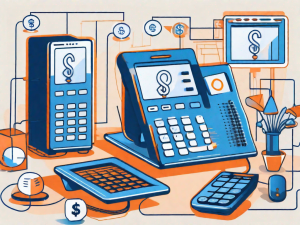It’s 2020. It’s a major election year. Parts of the U.S. are up in flames. Other parts of the country are facing major hurricanes. We all are dealing with is a national health pandemic. There is chaos everywhere.
Despite the chaos, however, customers still expect a certain level of customer service from the businesses they buy from. They expect access to support representatives 24/7 so whenever they have a question or problem, they don’t need to wait.
Call centers, email, and live chat make up the holy trinity of contact center customer support in the 21st century. But why do you need a contact center in the first place?
Buckle up, we’re going’ in.
Why You Need a Contact Center in 2020
There are so many reasons why you should have a contact center in 2020. Customers need to know they can reach you how and when they need you. Your customers expect accessibility and reliable support at any time, night or day. By having a contact center, you can help to instill customer confidence, have a competitive advantage in your industry, and increase your overall sales.
Build Customer Confidence
Building customer confidence and loyalty is a hard thing these days. There are so many different sources for information and answers. Customers can have a difficult time discerning what is genuine information, and what is a hoax. When this happens, they turn to the experts – ie. your customer support team!
In the US alone, it’s expected that by 2023 there will be over 300 million online shoppers. That means 91% of the US population will be using your digital space to research, analyze, and purchase your products (NPR). That also means there are 300 million online shoppers that your support team might have to assist.
Having a reliable and accessible contact center can help build confidence and loyalty with your customers by providing them with 24/7 experienced support to help them through their buyer’s journey.
Competitive Advantage
“Competitive advantage” is quite a popular buzzword when it comes to improving your business. Companies are always looking for ways they can rise above their competition and be seen as a leader in their industry. Contact centers can give your company a competitive advantage by simply existing. Let me explain.
When you have a reliable and accessible customer support team at your disposal, potential customers’ questions are answered efficiently, and existing customers know they can reach you when it is convenient for them. When potential customers feel they have all the information and power they need to make a purchase, you earn their business, and hopefully a lifelong customer. When your existing customers have their questions or concerns addressed effectively, they continue to do business with you.
When you have happy, satisfied customers, they sing your praise in reviews or among friends, and soon, more potential customers are contacting you. It’s an ongoing chain reaction that all can be traced back to your awesome customer support team.
Increase Sales
Every support session should be seen as a sales opportunity. This might be the most important factor for why you need to have a contact center in 2020. Whenever a customer or potential lead is contacting your support team, there is a level of interest that your team can play to and turn into a sale – but someone HAS to be available to communicate with the customer!
With the hustle and bustle of everyday business, employees might only get to help a fraction of their customers. That means there are calls unanswered, email unreturned, and live chats just waiting in the abyss. When 90% of customers don’t leave a voicemail, your company loses out on all those potential sales (Accolade Support).
Adding a contact center to your customer support strategy is a great way to avoid lost sales opportunities, and ensure that no customer goes unrecognized. By offering multiple channels for support communications, customers’ queries can be quickly and easily answered.
Contact Center Trends to Watch
Now that you’re privy to why your company needs a contact center in 2020, here are the trends to follow when implementing your new strategy.
AI is Here to Stay
Artificial intelligence (AI) is becoming a fundamental part of modern businesses, and contact centers are no exception. In fact, 83% of businesses say AI is a strategic priority for them, and 54% of executives say AI solutions have already increased their productivity (Commbox).
AI might be the most important tool when it comes to contact centers. The purpose of utilizing AI in contact centers is to make the process more streamlined for customers and contact center agents. Many people often mistakenly think that the purpose of AI is to replace contact center agents. This is not the case!
Contact centers are the direct link to your customers and a front-line representation of your brand. A great way of utilizing AI to better streamline your customer’s experience is to offer a voice response menu. For example, the AI program might prompt a customer to press 1 for English, or 2 for Spanish. Or you might have the menu broken into departments. For example, to speak with a support agent about account activation or termination, press 1, to speak with a sales representative, press 2, etc.
Using AI in this way allows customers to be connected with the agent that can best support their individual needs and specifications. This leads to better customer experience, a higher rate of customer satisfaction, and more life-long customers.
An Omnichannel Contact Center is a MUST
An omnichannel approach isn’t just something that is recommended, it’s what customers expect. In fact, companies with extremely strong omnichannel customer engagement retain on average 89% of their customers, compared to 33% for companies with weak omnichannel customer engagement (v12).
An important factor of an omnichannel strategy is that all channels must function as a stand-alone option for effective communication. For example, a good omnichannel strategy will allow a customer to use live chat if messaging is their preferred method of communication. However, this option should be the only option they need to use to effectively solve his or her problems.
A full-service contact center is ideal for customer support in the 21st century. With customers across so many demographics, you need to offer different options to meet customer’s needs.
Contact Center Analytics are Invaluable
While this isn’t a “new” trend, it’s still one that you’re going to want to follow closely, especially if you’re expanding and adding to your contact center strategy. With an omnichannel approach, you have a complete picture of all customer interactions and data so you can be confident that your analytics are accurate.
Dashboards that feature key performance indicators about contact center performance are becoming more and more important. Real-time analytics is also a key part of this trend. For example, agents should be able to see in real-time whether they are meeting their targets. If an agent can see what targets they are meeting and which need some improvement, they can adapt their approach in real-time to get better results (Commonbox).
Implementing a well-trained team of contact center agents to your existing team is the best way to stay relevant in the eyes of your customers, especially in 2020. Now only will you build trust and loyalty with your customers, but you can also boost sales and overall ROI. Following the highlighted contact center trends will allow you to better manage your contact center agents, as well as utilize some crucial tools for measuring agent performance and contact center success.







